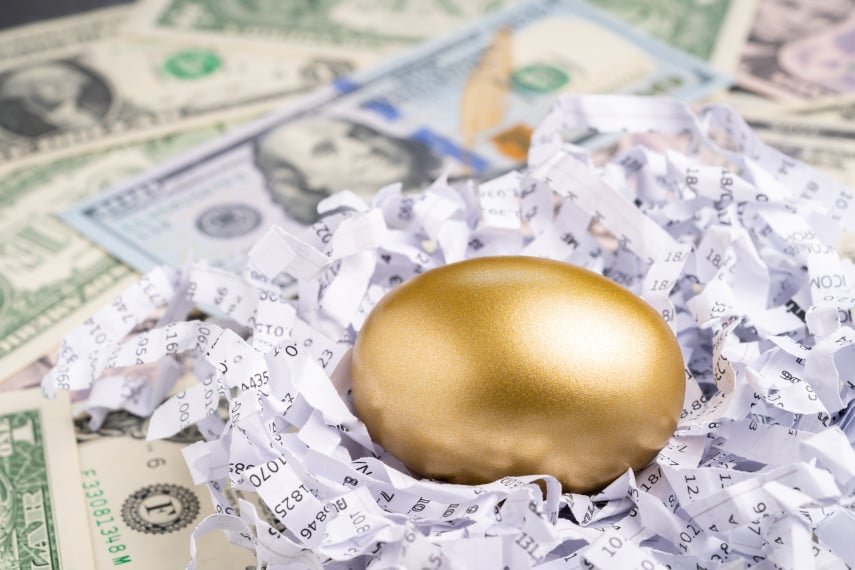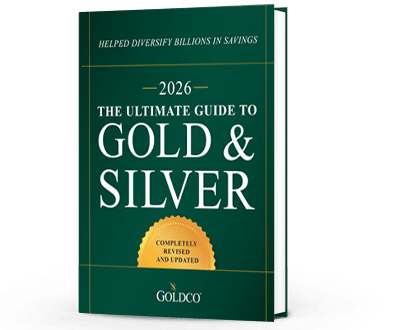Starting a Gold IRA: What You Need to Know
People choose to start a gold IRA for a number of different reasons Some are looking to help safeguard themselves against stock market instability Others are trying to help safeguard their wealth...
Retirement

One of the most common fears people have of retirement is running out of money. The thought of being in your 80s or 90s, largely dependent on others for your care, and not being able to pay for food, healthcare, or housing can be terrifying. It’s not a situation in which anyone wants to find themselves, but it’s also easily avoidable.
In order to have enough money to survive your retirement, you need to do three things: 1.) have enough money saved up at the beginning of your retirement; 2.) spend enough to live comfortably but not too much that you draw down your principal too quickly, and; 3.) keep your retirement savings invested in assets that will continue to grow during your retirement but that won’t put you at risk of losing huge chunks of your savings.
Those are simple rules of thumb, but as with many things in life they’re easier said than done. Thankfully there are ways to accomplish all of those, and it doesn’t have to be difficult. And by investing in gold, you can help yourself achieve those retirement aims.
The traditional three-legged stool of retirement saving has long gone by the boards. The three legs, pensions, Social Security, and private savings, are for most Americans weak to nonexistent.
Pension plans are all but extinct, confined these days largely to certain public sector employees. Even then, they’re funded mostly by employee contributions rather than employer contributions. And most pensions plans are horrendously underfunded, leaving those expecting a pension to worry about whether the money promised to them will actually materialize once they retire.
Social Security’s problems have existed for decades, but the crisis with the system is quickly coming to a head. Long-term financial instability, coupled with a rough patch in the economy, could mean that Social Security’s trust fund will be depleted by the end of the decade, with recipients only able to expect about 75% of their supposed benefits. Yet half of all retired couples today rely on Social Security for more than half their income, while 45% of single seniors rely on it for more than 90% of their income. That’s a recipe for disaster if Social Security is allowed to collapse.
Private savings aren’t doing too well either, with the US savings rate having continually declined over the last several decades. What money Americans do save is very often invested in stock markets, which while advertised as a great way to grow wealth are also subject to periodic severe crashes.
Gold can help investors save money for retirement, as it has been the second best-performing investment of the 21st century. Its annualized growth rates averaging 10% over the past two decades are more than double that of stock markets. And with stock markets set to weaken and gold poised to push ever higher, investors could see greater wealth appreciation with gold rather than stocks in the coming years, helping boost their retirement savings.
The first five years of retirement are when many retirees spend the most money. They’re just out of the workforce, their retirement accounts are flush with cash, and they’re ready to spend their newfound free time traveling and having fun. But if they’re not careful, they can spend so much money that they won’t have enough money left later on in retirement.
You’ve probably heard about the 4% rule, in which retirees are advised to live off 4% of their total savings each year in retirement. That may be a good rule of thumb for those with large nest eggs, but it doesn’t hold true for everyone. You’ll need to develop a budget and stick to it, making sure that you don’t spend more money than you absolutely have to. With the returns from your nest egg providing you with your retirement income, spending too much in the first years of your retirement can eat into your principal and leave you in a pickle as you age.
Because pensions are largely a thing of the past and Social Security’s dependability could be a coin toss, your private retirement savings will be your primary source of retirement income. If you’re able to live solely off your annual returns, great. That should stand you in good stead in retirement. But if you’re dipping into your principal each year, you’ll need to make sure that your retirement savings are invested in assets that maximize your ability to continue to grow your wealth even after you’re no longer able to earn wages.
That’s particularly important for those with tax-advantaged retirement accounts, who in most cases will have to start taking annual required minimum distributions (RMDs) starting at age 72. RMDs are something you’ll want to talk about with your financial adviser, as proper planning can ensure that you minimize the tax burden of your RMDs. But here too, gold can play a role in protecting your retirement savings.
For one thing, gold’s strong performance over the past 20 years is an indicator that investors have finally realized the importance that gold has to a properly diversified investment portfolio. And because gold very often does best during a weak economy, and the US economy is showing signs of weakness that could last a decade or more, the next several years should be primed for a very strong bull market in gold.
Gold is also helpful when it comes to investing after RMDs. Many investors choose to invest in gold through a gold IRA, which most choose to fund by rolling over existing tax-advantaged retirement assets from a 401(k), 403(b), TSP, IRA, or similar retirement account. A gold IRA offers the same tax advantages as a conventional IRA account, while also offering the ability to invest in physical gold coins and bars. And when it comes time to take a distribution, you can choose to take it in cash or in physical gold. That allows you to continue to own gold into the future and benefit from further gains, even if your gold is no longer held in your gold IRA.
Many investors are thankful that they trusted gold to protect their assets in the aftermath of the last financial crisis, and many more have already taken advantage of the opportunity to invest in gold in recent months to protect against a coming crisis. If you’re worried about your ability to retire safely and if you want to maximize your retirement savings while diversifying your investment portfolio and decreasing your risk exposure, then maybe it’s time to start thinking about investing in gold today.

